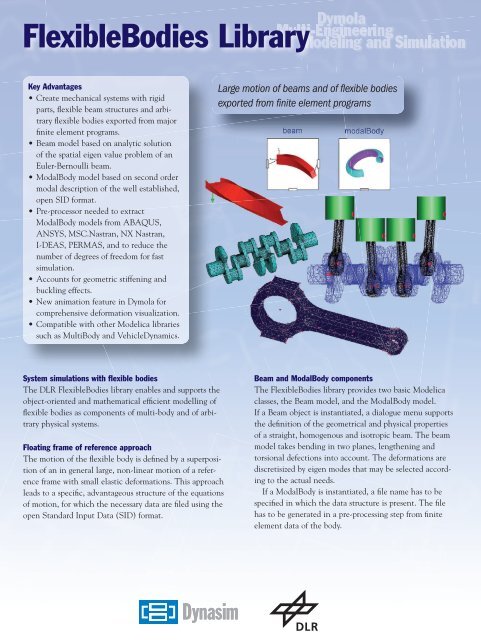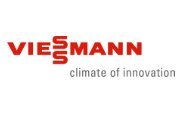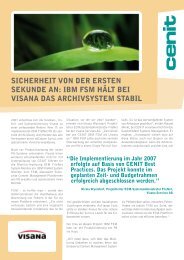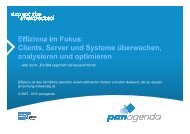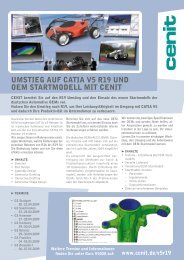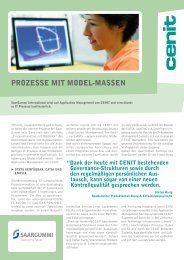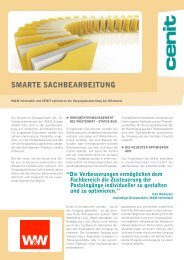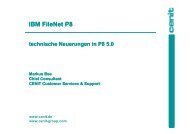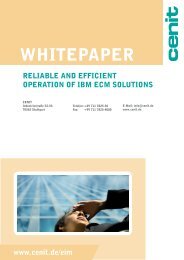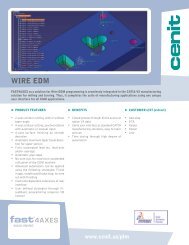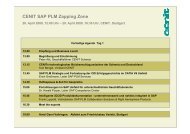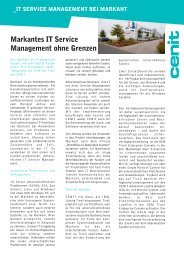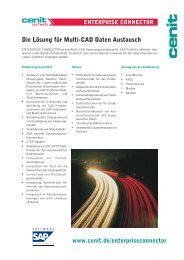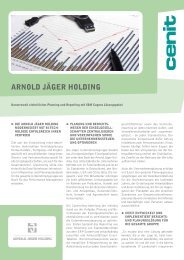You also want an ePaper? Increase the reach of your titles
YUMPU automatically turns print PDFs into web optimized ePapers that Google loves.
<strong>Flexible</strong><strong>Bodies</strong> <strong>Library</strong><br />
Key Advantages<br />
• Create mechanical systems with rigid<br />
parts, fl exible beam structures and arbitrary<br />
fl exible bodies exported from major<br />
fi nite element programs.<br />
• Beam model based on analytic solution<br />
of the spatial eigen value problem of an<br />
Euler-Bernoulli beam.<br />
• ModalBody model based on second order<br />
modal description of the well established,<br />
open SID format.<br />
• Pre-processor needed to extract<br />
ModalBody models from ABAQUS,<br />
ANSYS, MSC.Nastran, NX Nastran,<br />
I-DEAS, PERMAS, and to reduce the<br />
number of degrees of freedom for fast<br />
simulation.<br />
• Accounts for geometric stiffening and<br />
buckling effects.<br />
• New animation feature in Dymola for<br />
comprehensive deformation visualization.<br />
• Compatible with other Modelica libraries<br />
such as MultiBody and VehicleDynamics.<br />
System simulations with flexible bodies<br />
The DLR <strong>Flexible</strong><strong>Bodies</strong> library enables and supports the<br />
object-oriented and mathematical effi cient modelling of<br />
fl exible bodies as components of multi-body and of arbitrary<br />
physical systems.<br />
Floating frame of reference approach<br />
The motion of the fl exible body is defi ned by a superposition<br />
of an in general large, non-linear motion of a reference<br />
frame with small elastic deformations. This approach<br />
leads to a specifi c, advantageous structure of the equations<br />
of motion, for which the necessary data are fi led using the<br />
open Standard Input Data (SID) format.<br />
Dymola<br />
Multi-Engineering<br />
Modeling and Simulation<br />
Large motion of beams and of flexible bodies<br />
exported from finite element programs<br />
Beam and ModalBody components<br />
The <strong>Flexible</strong><strong>Bodies</strong> library provides two basic Modelica<br />
classes, the Beam model, and the ModalBody model.<br />
If a Beam object is instantiated, a dialogue menu supports<br />
the defi nition of the geometrical and physical properties<br />
of a straight, homogenous and isotropic beam. The beam<br />
model takes bending in two planes, lengthening and<br />
torsional defections into account. The deformations are<br />
discretisized by eigen modes that may be selected according<br />
to the actual needs.<br />
If a ModalBody is instantiated, a fi le name has to be<br />
specifi ed in which the data structure is present. The fi le<br />
has to be generated in a pre-processing step from fi nite<br />
element data of the body.
4<br />
1<br />
3 2<br />
Dymola<br />
Multi-Engineering<br />
Modeling and Simulation<br />
Typical Application<br />
Example – Helicopter Rotor<br />
The model Helicopter Rotor mainly consists of a rheonom<br />
driven, cylindrical rotor base, two joints and one blade.<br />
The rotor base rotates around its cylindrical axis that<br />
coincides with the global z-axis, while the lag joint allows<br />
for a rotation around a local z-axis at the outer radius of<br />
the rotor base. The fl ap joint defi nes an angular motion<br />
around the local y-axis at the circumference of the rotor<br />
base.<br />
In its initial state the rotor base does not move and the<br />
fl ap stop, a bump stop, applies the torque to counterbalance<br />
the gravity of the blade. A linear spring-damper<br />
element actuates according to the state of the lag joint and<br />
transmits the drive torque to the blade.<br />
The 6-m-long blade is modelled as a fl exible beam with<br />
7 bending modes in its xz-plane and 2 bending modes in<br />
its xy-plane, so that a frequency range up to 270 Hz is<br />
covered.<br />
The 3D-view of the model depicts its initial confi guration.<br />
The grey animation is a scaled version of the red<br />
animation and exaggerates the deformations of the blade.<br />
The fi rst result plot shows the applied, smooth rotor<br />
drive acceleration of the simulated start-up scenario. The<br />
fl ap joint angle tends against zero with increasing rotor<br />
rotation so that the blade moves towards its vertical alignment.<br />
The second result plot presents the deformation behaviour<br />
for 2 bending modes in xy-plane (with78 Hz and<br />
252 Hz eigenfrequency) and 3 bending modes in xz-plane<br />
(related to 7.9 Hz, 26 Hz and 53 Hz eigenfrequency).<br />
Generally, all modal amplitudes decrease with increasing<br />
angular velocity and clarify its stabilising infl uence. Note<br />
that the reproduction of the stabilising effect relies on the<br />
consideration of geometric stiffness terms.<br />
Disclaimer: Scope of library and specifi cation may change<br />
without prior notice.<br />
Hilding Elmqvist, Ph. D.<br />
CEO, Chief Architect, Dynasim<br />
Dynasim AB<br />
Ideon Science Park<br />
Ole Römers väg 16<br />
223 70 Lund, Sweden<br />
Tel: +46 46 286 2500<br />
Direct: +46 46 286 2502<br />
Fax: +46 46 286 2501<br />
www.dynasim.com<br />
Hilding.Elmqvist@dynasim.com<br />
Dynasim AB · Ideon Science Park · SE-223 70 Lund · Sweden<br />
Phone +46-46-286 25 00 · Fax +46-46-286 25 01 · www.Dynasim.com · Info@Dynasim.com<br />
German Aerospace Center (DLR) · Institute of Robotics and Mechatronics · System Dynamics and Control<br />
82234 Weßling · Germany · www.dlr.de/rm/control/<br />
4<br />
1<br />
3 2<br />
[CY] helitera.se<br />
© Dynasim AB 2008. Subject to change without notice.


